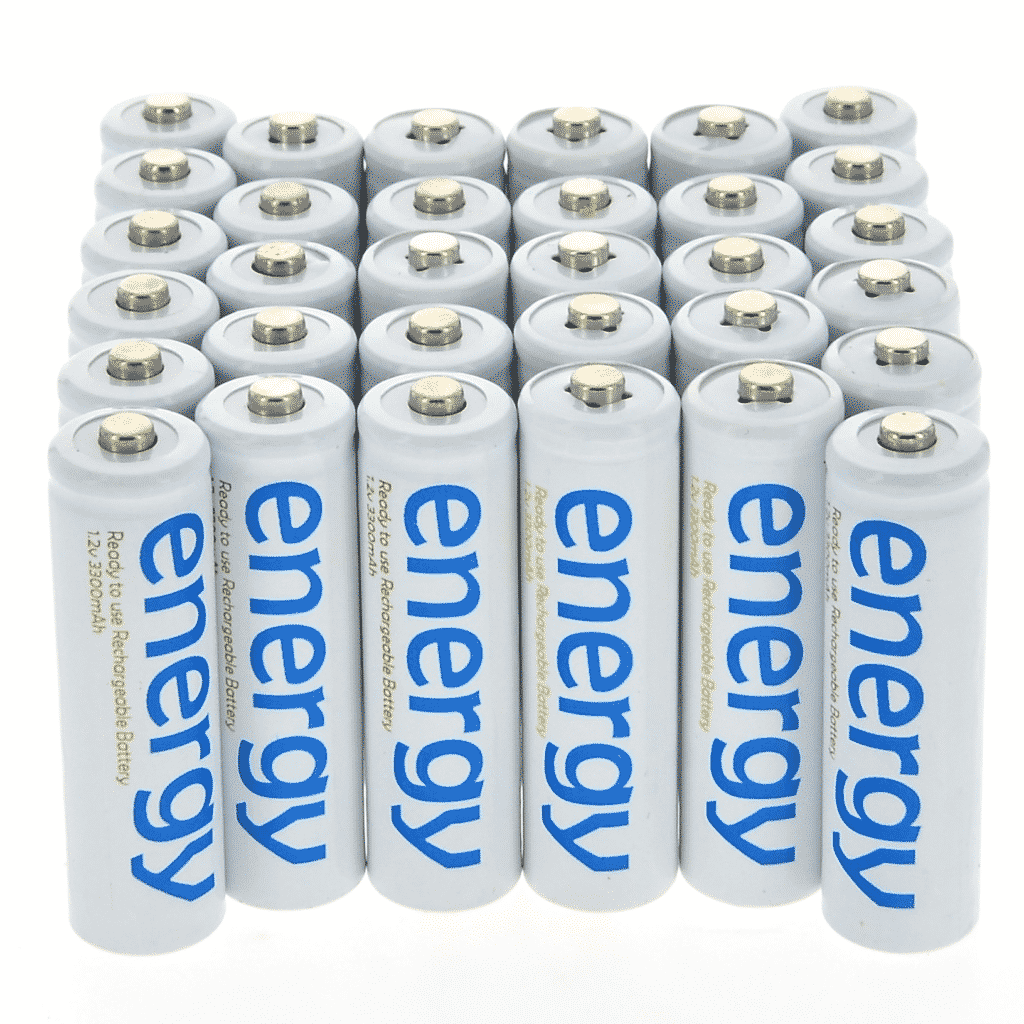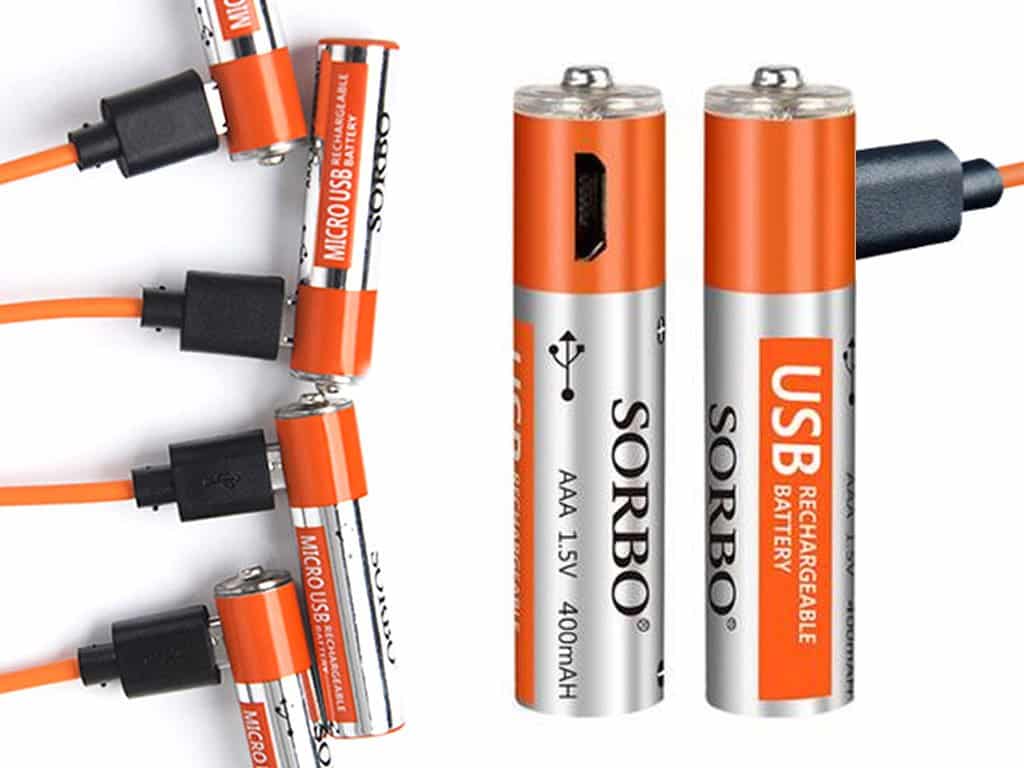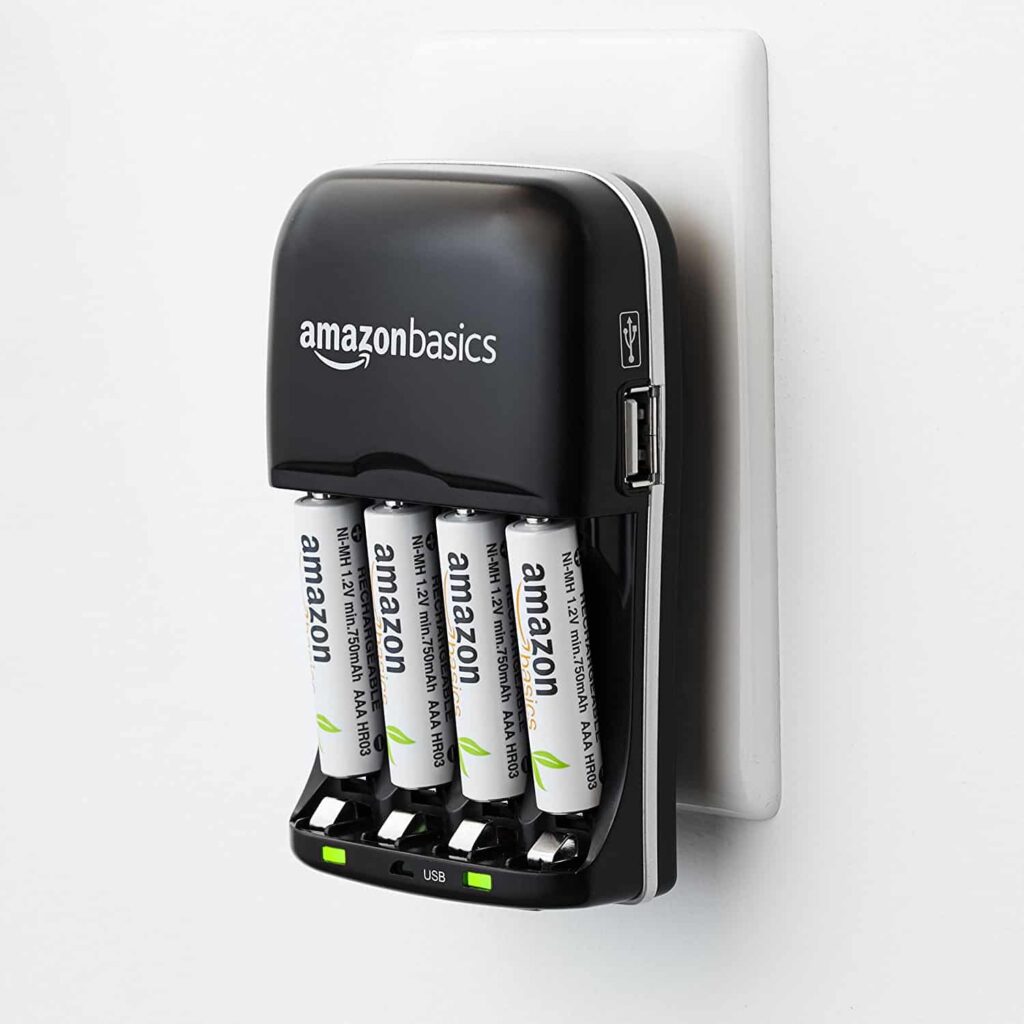The Top 10 Best Rechargeable AA Batteries
“We’ve compared the best Rechargeable AA Batteries available at the most competitive prices.”

Best AA Battery Reviews
AA rechargeable batteries are a great invention that has transformed our lives in many positive ways. Modern technology is dependent on its use. They have also been used to power such diverse devices as model airplanes and electric wheelchairs. The AA battery was invented in the 20th century by an American engineer named Harvey Anderson. He is reported to have been working on a solution for his mother’s problem of always running out of power when listening to her radio.
He spent months working on the problem, and finally, in 1957, when he was only twenty-two years old, he found a way to make rechargeable AA batteries. His great invention brought him glory and fame. He became wealthy, but more importantly, his design has improved many lives. The AA batteries are a form of rechargeable battery called Nickel-Cadmium. They make use of the chemical reactions between cadmium and nickel to produce power.
- Rechargeable: Yes
- Voltage: 1.2V
- Capacity: 3000mAh
- Recharge Cycles: 1000
- Size: AA
- Rechargeable: Yes
- Voltage: 1.2V
- Capacity: 3000mAh
- Recharge Cycles: 1000
- Size: AA
- Rechargeable: Yes
- Voltage: 1.2V
- Capacity: 3300mAh
- Recharge Cycles: 1000
- Size: AA
- Rechargeable: Yes
- Voltage: 1.2V
- Capacity: 3000mAh
- Recharge Cycles: 1000
- Size: AA
- Rechargeable: Yes
- Voltage: 1.2V
- Capacity: 2200mAh
- Recharge Cycles: 1000
- Size: AA

How Do The Best Rechargeable AA Batteries Work?
First, the idea of rechargeable AA batteries is to be able to use one set of rechargeable AA batteries rather than four sets of non-rechargeable ones. If you have a lot of gadgets and things that need batteries, this can save a lot in terms of money. Second, rechargeable AA batteries are better for the environment. They eliminate a lot of waste that would otherwise be thrown out. Third, rechargeable AA batteries are much more convenient. You can plug one set in at a time and let it charge while you use the others. Fourth, rechargeable AA batteries are more reliable. A lot of non-rechargeable batteries don’t work very well. Fifth, rechargeable AA batteries are safer than non-rechargeable ones. They don’t have to be disposed of with combustible materials.
The Rechargeable AA Batteries Are Special-Engineering Marvels.
The AA battery is a nickel-metal hydride rechargeable cell, which can provide electrical energy to many different types of devices. For example, some portable digital cameras and cordless mice use them as their primary power source. To use an AA battery in the camera or mouse, you put it into the device and then switch on the power. When the power is turned on, it starts to send a flow of electrons from one end of the battery, which is stored in a special compartment called the anode. This compartment contains chemicals that maximize the chance of getting more electrons. When an electron leaves the cathode, it also releases a proton into the container. The protons stored inside move into the other part of the battery that is called electrolyte and gets neutralized.

How Long do Rechargeable AA Batteries Last?
Rechargeable AA batteries are convenient, especially considering that the average household in any country uses them. They last for a long time, and they’re not very expensive. However, they do have their disadvantages. For example, you might be out of power in the middle of a project and not have any extra batteries around. You could say that rechargeable batteries are a good idea for people who don’t know about power usage, but when you get comfortable with them, you might want to go back to using non-rechargeables.
Rechargeable batteries can last a lifetime if they are continually recharged. For example, an AA battery that has been fully charged 1000 times will still be able to power the device it is used in for a long time. Of course, from a physical perspective, this is not true. After so many charges, the electrons in the AA battery will have dissipated. The battery has lost its ability to hold energy.
Where Are Rechargeable AA Batteries Mostly Made?
Batteries and metals are used in rechargeable batteries, have both an internal capacity for storing energy and the ability to discharge this energy. Energy is the power or rate of doing work (dictionary.com). While metal and other materials that are used in rechargeable batteries make up the external physical aspects of these devices, their internal capacity for storing energy is what allows them to function. The internal capacity for storing energy is one of the defining characteristics of a battery since all batteries have this quality (batteryuniversity.com). While rechargeable batteries are not the only types of batteries, they are by far the most common type used today.

What are Milliamp hours and Amp hours in a Rechargeable Battery?
The internal capacity for storing energy in rechargeable batteries is measured in amp-hours (Ah) and milliamp-hours (mAh). The more Ah a battery has, the larger its internal capacity for storing energy. For example, a 1.5 Ah would be able to keep up to 1.5 amperes of charge while a 2.4 Ah would be able to hold up to 4 amperes of charge.
On the other hand, milliamp-hours are used as a measuring unit for how long it will take to discharge a battery. For example, if you have 10, Ah and it takes two mAh of charge per second to charge your battery fully from empty (such that your 1.5 Ah would be able to store up to 30 amperes of electricity). The time it would take for you to fully charge this type of rechargeable battery would be 600 seconds or 10 minutes.
- Rechargeable: Yes
- Voltage: 1.2V
- Capacity: 3000mAh
- Recharge Cycles: 1000
- Size: AA
- Rechargeable: Yes
- Voltage: 1.2V
- Capacity: 3000mAh
- Recharge Cycles: 1000
- Size: AA
- Rechargeable: Yes
- Voltage: 1.2V
- Capacity: 3300mAh
- Recharge Cycles: 1000
- Size: AA
- Rechargeable: Yes
- Voltage: 1.2V
- Capacity: 3000mAh
- Recharge Cycles: 1000
- Size: AA
- Rechargeable: Yes
- Voltage: 1.2V
- Capacity: 2200mAh
- Recharge Cycles: 1000
- Size: AA
Read Rechargeable AA Battery Reviews Before You Buy Them(to Avoid Problems!)
Rechargeable batteries are ubiquitous in households, businesses, and many other places. These are essential tools that can save money by being recharged instead of having to buy new batteries all of the time. However, they do have several problems. For example: Overcharging: This is when a battery is left on charge for longer than it needs to be, and this causes damage or even fire hazards due to overvoltage. One solution could be limiting charge current, so it does not exceed safe limits. Another problem with rechargeable batteries is that they can be undercharged, which causes the battery to fail earlier than expected. There are a few ways this could be avoided, such as having a timer, so batteries automatically shut off after a particular charging time. Most rechargeable batteries have an indicator light which shows when the battery is charging and when it is done. One of the problems that can occur with this system is that there are times when the light remains on even after the battery has been fully charged, causing people to think it isn’t working. One solution to this problem would be to have a separate power switch on the charger so it can be turned off after charging has completed. Another problem with rechargeable batteries is that there are times when the indicator light is on, but it does not mean the battery has been charged. A blown a fuse can cause this or if the charger itself malfunctions. Another problem is that batteries can be overcharged, which can cause them to catch fire or explode. This is an issue that often occurs in cars when the battery has been left on charge for too long.